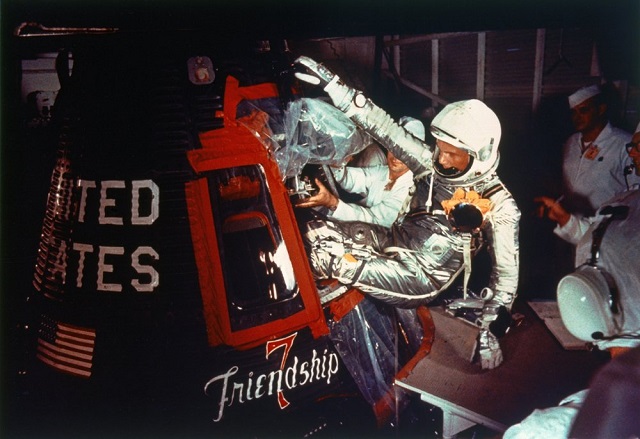
Miami, United States | AFP |
John Glenn became the first American to orbit the Earth in 1962, but for a solid hour of that journey, NASA feared he was about to die in a blazing fireball.
In fact, all of the original crew of astronauts, known as the Mercury 7, risked life and limb in order to explore the frontier of space, and some died in the effort.
The death Thursday at 95 of John Glenn, the last of the so-called Original Seven who were chosen as NASA’s first astronaut corps in 1959, reminded many Americans just how far the US space program has come in the past five decades.
“Back before any human had actually gone into space the doctors weren’t sure they would survive,” said space policy expert John Logsdon.
He recalled concerns that powering into space aboard a rocket, then shifting to weightlessness in microgravity, might prove fatal. “It was all new territory.”
Monkeys and mice were blasted off on rockets in the 1940s and 50s, and often they died in the process.
Eventually, a chimpanzee named Ham blasted off aboard the new Mercury 7 rocket in 1961 and survived, offering limited reassurance that human astronauts might be OK.
Then, Russia launched Yuri Gagarin, the first man ever in space, in 1961, and his survival took some concern away from the US crew.
But not much.
Rockets teetered on liftoff, exploded over the launch pad and collapsed into smoke and flames with jarring regularity.
“Many of us were skeptical and deeply concerned about NASA’s plans to launch the Navy test pilot Alan Shepard on what would be our first space flight,” wrote news anchor Walter Cronkite in his 1997 book, “A Reporter’s Life.”
He recalled watching those explosions, one after another, and described NASA as making a “feeble attempt” to catch up with the Soviets in the space race.
Shepard survived his 1961 trip to become the first American in space — although not orbit, which was Glenn’s feat — but years later, some of his colleagues were not so lucky.
In 1967, a spark ignited a fire inside the Apollo 1 capsule while it sat on the launchpad, incinerating all three men on board.
One of them was Gus Grissom, who was part of the Original Seven, and who had years earlier become the first man to launch into space twice.
Not too tall
The first astronauts were all military test pilots, and much has been written about their unique mental strength and capacity for risk, showcased in the 1970 Tom Wolfe book “The Right Stuff” and the 1983 movie by the same name.
“Test pilots almost by definition push the limits of what their machines can do,” said Logsdon. “They were very much used to risking their lives before the space program.”
But there was another, lesser known criteria.
“They had to be short,” said Logsdon.
None could be taller than five feet 11 inches (1.8 meters), so that they could squeeze into the tiny, cone-shaped capsules that NASA cobbled together back then.
The single-passenger Mercury capsule that Glenn rode in was six feet 10 inches long (two meters) and about the same in width.
“If you go and look at the Mercury capsules now it is amazing that somebody was willing to get into that thing, to sit on top of a small nuclear weapon-equivalent in the energy — particularly in the Atlas rocket — and get thrown into an alien environment,” Logsdon said.
Years ago, Glenn said he was often asked how he felt in those moments before blasting off.
“I felt exactly how you would feel if you were getting ready to launch and knew you were sitting on top of two million parts — all built by the lowest bidder on a government contract,” Glenn answered.
Glenn’s launch in 1962 went smoothly, but as he circled the Earth three times, mission control picked up a signal that suggested his landing bag had deployed prematurely.
Charles Murray, co-author of the book “Apollo: The Race to the Moon” said in a 1989 interview with C-SPAN that “they were really convinced for about an hour that they were going to lose that guy.”
The glitch could have meant the heat shield would not work, “and he was going to get burned to a crisp,” he added, describing the mood as one of “controlled terror.”
After Glenn’s successful splashdown, the staff at mission control celebrated by passing out American flags and lighting cigars, as was the habit back then.
On Friday, US President Barack Obama ordered all American flags at public buildings and military outposts to be flown at half-mast on the day of Glenn’s funeral as a mark of respect.
 The Independent Uganda: You get the Truth we Pay the Price
The Independent Uganda: You get the Truth we Pay the Price



